Do you want to create a marketing plan for your startup? Would you like to learn about startups with successful content marketing strategies?
Content marketing generates more leads than paid search and costs 31 to 41% less. It also helps generate more traffic and can increase conversion rate by 6 fold.
It is the most affordable solution for startups that want to gain an edge over competitors. But content marketing for startups is easier said than done, especially with the high fail rate of both blogs and startups. Combining them in order to get positive results is even harder.
When you notice startups generating positive results with content marketing, you should sit up and pay attention, especially if you are the founder or marketer at a startup.
Today I am going to simplify this task for you by discussing 4 startups with successful content marketing strategies. I will break down their strategies and techniques so that you can implement them to promote your startup…
Would you like to read this post later? Then you must download the PDF version by clicking the below button…
Click Here to Download Free PDF Version of the Post
Bufferapp

Every marketing strategy requires a foundation. Your content marketing foundation should be laid with a blog. In its absence your strategy will crumble. If you want to learn how to build a successful blog quickly you should learn from Buffer. Their blog receives 866,909 pageviews a month and their posts get shared multiple times on several top networks. This one on free image sources, for example, received over 7,000 tweets, 5,000 Facebook Likes and over 3,000 +1s and Linkedin shares.
Here are some of the techniques buffer has used to build a powerful blog…
#1. A well planned blogging strategy to not just reach customers:
Initially, the Buffer blog restricted itself to only publish posts on Twitter tips as when they launched you could only schedule to Twitter with their app. After they introduced features that allowed people to schedule on Linkedin and Facebook they modified their strategy and shared a broader variety of social media tips.
Later on, they realized that this type of content only has a limited reach. It didn’t reach as many people as they wished to. This is when Leo Widrich, co-founder of Buffer, came across Rand Fishkin’s, Content Marketing Manifesto.
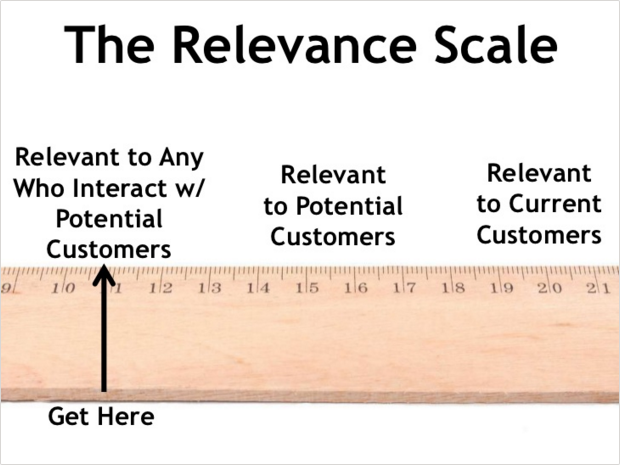
Of all the slides in the presentation, Leo Widrich, was inspired most by the above slide that stressed that people should create content that not only reached current and potential customers, but also influencers who interact with potential customers. You can check out all the slides below…
It convinced them to modify their strategy to include tips on creativity, productivity and other topics that gripped influencers (along with social media tips). This boosted their social media shares by 4 times. 250 shares per post rose to more than 1,000 shares per post.
This way you too should regularly modify your strategy to reach both customers and influencers who engage with your potential customers. Experiment with new methods and measure the results to confirm their effectiveness. There are some content tools that can send you reminders when it is time to adjust your strategy. An alternative is to set reminders on your project management software and have a predesigned calendar management plan for regularly updating your content and strategy.
#2. Guest posts:
Most bloggers and startups think of guest posts as only a means to build backlinks. But Leo Widrich saw the bigger picture and used them to build a relationship with top bloggers. In an interview Leo mentioned that ‘Relationships are hard to track, but are actually the most important thing you gain from guest posts. At the end of the day, if you do a lot of guest posting you simply make a lot of friends.’
Leo Widrich wrote around 150 guest posts in about 9 months and this helped Buffer gain around 100,000 users. His guest posts have appeared on popular blogs like Social Media Examiner, Social Mouths, Jeff Bullas and KISSmertics.
When you write a guest post with a meagre aim to gain a backlink or two, the benefits you get are miniscule, but when you have a more robust guest posting strategy geared towards building relationships you get way more benefits. The benefits include more blog posts shares on your blog (as your new friends will share them), more backlinks and traffic (as bloggers will write about you and link to you).
Therefore, create a guest posting strategy to build relationships with bloggers and startups.
#3. Content syndication:
Writing several guest posts is a colossal task, especially for understaffed startups that need to create content for their blog too. For them the alternative is content syndication. Buffer initially started with writing several guest posts, but they moved on to content syndication. Instead of writing guest posts from scratch they got their articles republished on top sites like The Huffington Post, The Next Web, Fast Company and Life Hacker.
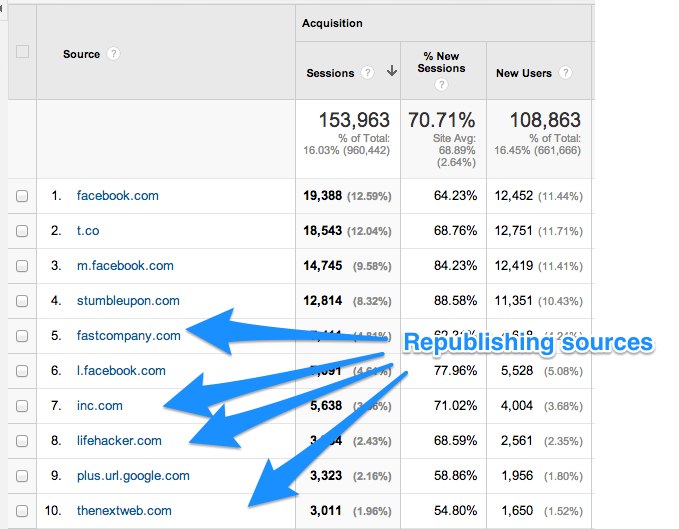
Content syndication helped them get thousands of visitors through referrals. It also helped the articles on their blog get more shares. In fact, it resulted in one blog post getting 6,000 additional shares.
Getting your content republished on top sites will also increase credibility.
Some people might argue that syndication is creating duplicate content and this will lead to penalties from Google, which will affect search engine rankings. But this is not always true as James Clear who gets his content republished on other websites found that it didn’t decrease his SEO traffic. You can learn more about how James Clear gets his content republished on other sites like Lifehacker and uses it to generate more email subscribers by reading this post.
If you are still worried about search engine penalties, you could wait a few days before getting the post republished so that Google knows that the post belongs to you.
#4. Transparency:
If you want your blog posts to attract the most backlinks, comments and social media shares, you need to ensure that it is different from everything else out there.
Buffer achieves this by being as transparent about their company as possible. For e.g. earlier I was able to tell you the exact number of page views the buffer blog receives because it was written in a blog post which details their August content report. In the same blog post, I can see the number of unique visits they received, increase in email subscribers, the number of direct conversions, top referral sources and various other statistics.
I didn’t have to use websites like Similar Web and Comscore to speculate the amount of traffic they receive.
This transparency makes their content unique. People will definitely give more attention to this type of content than boring articles that tell you ‘why people should blog’ or ‘why businesses should create content’ as these topics have been covered 1000’s of times and everyone knows the answer.
They have got several blog posts in the open section of their blog that provide information on what is happening behind the walls on Buffer. Like this one where they display their employee wages.
This a gold mine of information for people interested in running their own startups and blogs, hence it will drive a ton of traffic and engagement.

Note: Only be transparent if you are sure that you are okay with it. Avoid it if it is out of your comfort zone because once it is out there it cannot be deleted.
These are some of the most important techniques Buffer has implemented to run a popular blog which has helped them build a powerful foundation for their content marketing strategy. You too can implement some of the above techniques to drive more traffic and generate customers.
Leadpages
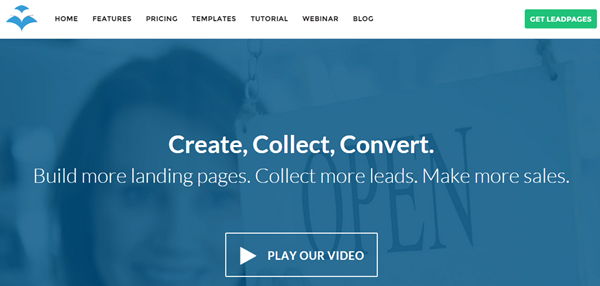
When you visit the buffer blog you notice that they don’t place much emphasis on getting more email subscribers. Optin forms asking you to subscribe to their newsletter can only be seen on their footer and the occasional hello bar. Most of the Hello Bar displays ask you to sign up for a free account. There’s also a slider, a footer ad and a header ad that prompt you to do the same.
This works for Buffer as they follow a freemium model and the free version of their tool is excellent. So what can startups that don’t offer a freemium model do to increase conversions? They can do what Leadpages do which is to convert traffic to email subscribers.
Leadpages content marketing strategy focuses on one thing, email. It is all about attracting the right traffic, capturing their email address and nurturing these leads. Focusing on email helped Leadpages go from 0 to 15,000 customers in 12 months. They hit a $3.5 million run rate in the first 9 months itself.
I am going to show you how Leadpages use email to build a content marketing strategy below…
#1. Attracting traffic:
To convert people into email subscribers, you need to drive traffic first. Leadpages understand this and implement various methods to drive more traffic.
One of them is blogging. On their blog they regularly share tips on how to create better landing pages and increase conversions. They also publish email marketing tips. Their posts stand out because they share unique statistics on how modifications on their landing pages (A/B tests) lead to an increase in conversions. Some of these are experiments they conducted by themselves and some of them have been conducted by Leadpages users.
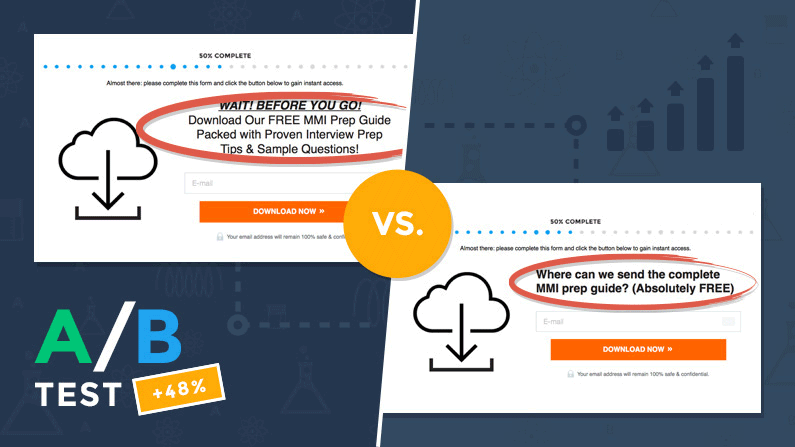
Take a look at this post for example. It shows us how a Leadpages user, BeMo Academic Consulting Inc., increased their conversion rate by 47.56% by modifying a little text. This type of post works out really well for Leadpages because it advertises their product, strengthens their relationship with a customer and adds social proof. BeMo also benefits from this post as they get a good amount of exposure on a popular blog. Hence, they will promote it to their followers.
In a similar way they go on sharing unique statistics on how colours, messages and images improved conversions.
Another source they use to drive traffic and to build a relationship with their audience is YouTube. An example is the below video where Jeff Wenberg, Head of Product Education, shows us how to create a product launch funnel.
To drive traffic, they include a link to their blog in the description.
Videos are great for educating your audience as 52% of marketers name video as the type of content with the best ROI.
Leadpages also regularly use Facebook ads to drive traffic to their landing pages.
#2. Converting to subscribers:
Leadpages execute several tactics to convert traffic gained from the above sources into subscribers. Some of these include offering content upgrades, free templates, giving away detailed courses and running several webinars.
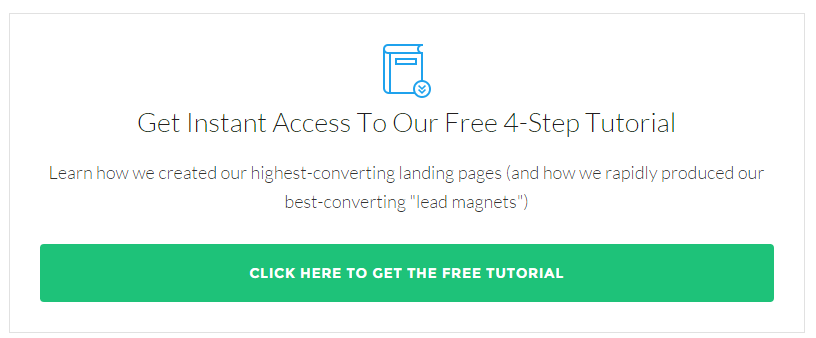
If you visit slide number ‘52’ in the aforementioned Leadpages-KISSmetrics presentation and check the slides following it too, you will notice that Leadpages stress on the importance of webinars. This is because they found that their webinar landing pages received the highest conversions. 9 of the 12 highest converting pages on their website are webinar registration pages.
They conducted over 200 webinars in 2014 alone. That’s almost 4 webinars a week!
Another popular lead magnet they use to convert visitors to subscribers is courses. On their website they have several free courses that teach people how to do things like run Facebook ads and create webinar marketing funnels. They are as good as the ones people pay hundreds of dollars for. These courses can be watched for free online even without the need to sign up, but they give you the option to download them by signing up with your email address.
#3. Nurturing subscribers:
Most email marketing strategies don’t involve much effort to build a rapport with new subscribers. They just email them their free gift when they sign up and stop there. After that it is an endless parade of marketing messages and links to their blog posts.
Leadpages email marketing strategy differs immensely from this. It is explained by Chris Davis, Head of Marketing Automation at Leadpages, to Bob the teacher in the below video.
Chris Davis mentions, ‘What we found by the dashboard numbers are that 50% of the customers convert from either a stranger to website visitor to a customer in the first 4 weeks. So with no follow up strategy in place, that’s half our customers that we would not have to this date. ‘
He goes on to add that ‘probably about 75% of our customers come 3 months out’.
This shows the importance of creating a follow up sequence that nurtures leads for weeks and months instead of days.
You too should use many of the above techniques used by Leadpages to convert the traffic your blog received into subscribers and then stay in touch with them even after they convert to customers.
If you haven’t got a landing page creator or are looking to get a new one, you should check out Leadpages. I use them. Here’s my review for Leadpages.
Hubspot
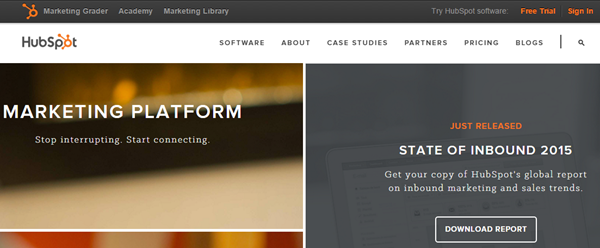
Hubspot has been running a successful content marketing strategy for years. Their blogs receive more than 2 million monthly visits and they have over 500,000 subscribers. If you want to learn how to consistently create various types of content you must check out some of the tactics they use below…
#1. Publishing several posts a day:
If you visit the Hubspot blog right now and scroll through their latest posts, you will notice that they publish several posts a day. This gives them an edge over startup blogs that only publish a few times a month or week.
#2. Creating free tools:
“Website grader and the blog tend to be how people first find us…whether it’s through SEO and searching in search engines and finding a blog article or hearing about website grader from a friend and coming in that way,” Says Mike Volpe, former CMO of Hubspot.
Website Grader is a free tool offered by Hubspot that lets you analyse any website for free and check how well it is set up. The tool proved so popular that by January 2010 it had already been used to analyse over 2 million website URLs.
Along with this tool, Hubspot offers various other free tools like Marketing Grader that grades your online marketing methods, TweetWhen that tell the days and times on which your tweets get the most retweets and Linktally that analyses URLs and shows you how many times they have been shared on different social media.
These tools help them build relationships with their audience as they do the same thing content does, improve their marketing strategy. They actually provide more accurate suggestions than other content as they show unique results for each individual.
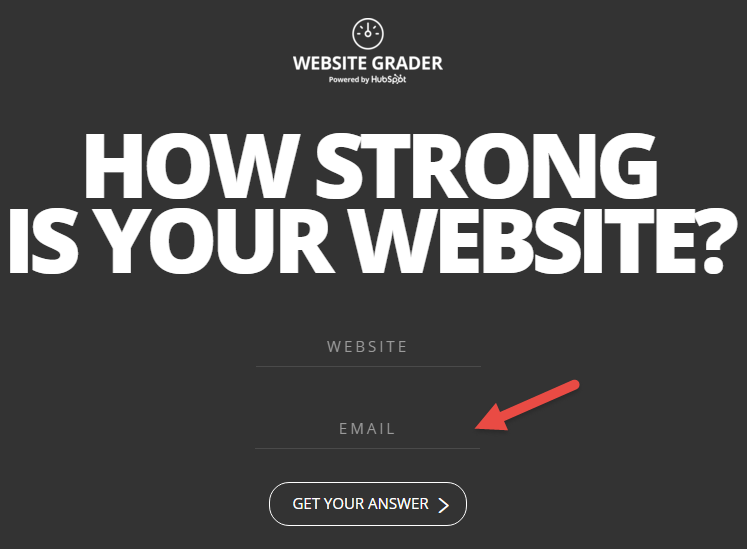
They also help them generate leads as the submission form for these tools ask for email address along with other information.
#3. Creating a lot of gated content:
Over the years Hubspot has created a ton of lead magnets. These include ebooks, white papers, reports, templates and worksheets.
Learn how to write white papers by reading our free white paper on how to write white papers
Click Here to Download Free White Paper on How to Write White Papers
They cover various topics like content marketing, social media marketing and SEO. You can check them out on their marketing resources page.

These resources were promoted using a call to action at the end of the blog post which tripled the number of leads they generated from their blog. For Hubspot the conversion rates from these calls to actions are really high because they match lead magnets to relevant blog posts only.
Another thing you will notice about the lead magnet landing pages is that they ask for extra information like the number of employees, position at the company and phone number. Asking for this extra information might decrease conversions, but it will help them generate more qualified leads.
Like Hubspot if you would like to generate more traffic and leads, devise a content marketing strategy that contains both freely available and gated content that needs to be downloaded in exchange for information.
Sumome
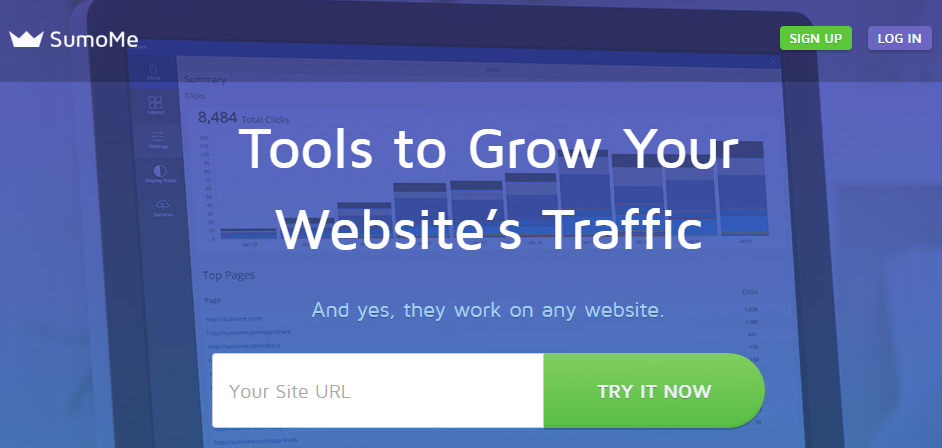
Sumome reached 1 billion people in 2014 and it was launched in 2014 itself.

A strong content marketing strategy has played a key role in helping them reach this goal. Below you can learn about the content marketing arsenal their strategy consists of and how they help them…
#1. Publishing case studies:
Case studies are testimonials on steroids. When created and used correctly, they can convert even the most sceptical of visitors into users. Sumome has several case studies available on their website that show how users benefited with their tool.
The best part about these case studies is that that they are written by the users themselves. They also contain real numbers and stats (just like all good case studies) which make them highly effective.
My favourite case study is this one by Dustin Lee of Retrosupply. In it, Dustin writes about how Sumome will be helping him make $70,000 more.
He includes statistics like how his blog conversion rate was only 2% before and how it tripled after installing Sumome.
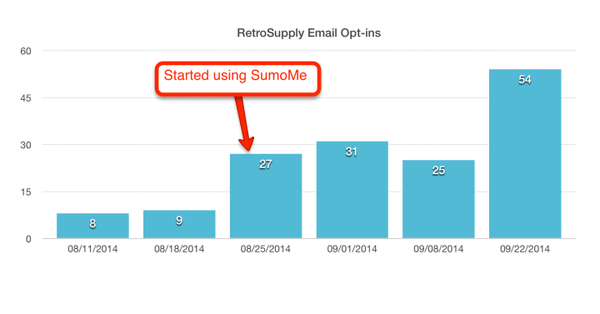
He also shows you how easy it is to install and the exact copy and design he used for his optin forms. After you finish reading it you are convinced that Sumome works and is easy to use therefore you are very likely to install it on your website as well.
This case study must have been read by plenty of people as it was published on AppSumo and promoted to AppSumo’s 700,000+ email subscribers.
To aid your content marketing strategy, you too should create case studies that show how a company or user performed before they hired you or used your product. And the positive results they achieved after. Include plenty of specific numbers and stats as it will make your case studies more credible. Don’t forget to promote it on your website homepage, blog posts, landing pages and newsletter.
You can see more case studies on the Sumome blog. Here they also have plenty of helpful blog posts. You must read the post by Cathryn Lavery and Allen Brouwer where they write about how they generated 3,253 email subscribers in 3 months and raised $15,000, for their Kickstarter campaign (back then, as the campaign ended up raising $ 322,695).
#2. Creating email Courses:
Noah Kagan, Chief Sumo at Sumome, understands the importance of building an email list. As aforementioned he has had great success in achieving this for Appsumo. You can learn more about how he did this here.
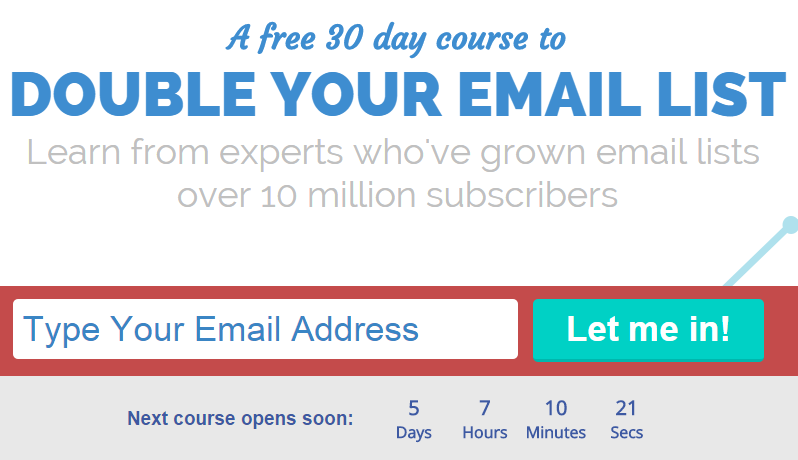
At Sumome he and his team build their list by running free email courses like Email 1K and Traffic 1M. In these free email courses, top marketers and entrepreneurs provide unique tips. You have people like Joanna Wiebe, James Clear, Kevan Lee, Neville Medhora, David Kadavy and Brennan Dunn sharing various marketing tips. These courses benefit the instructors because they get exposure and it benefits Sumome because it provides exposure to their tool which is advertised at the bottom of some of the emails.
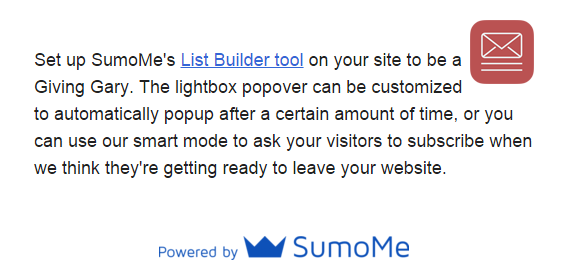
And of course, they get huge amounts of subscribers.
They also advertise Sumome in the free Toolkit, offered along with the course, where you can find coupons codes to various tools.
Running free email courses will not only help you build a list, but also build a strong relationship with your subscribers as you will send them several tips over a period of time. Therefore, incorporating one into your content marketing strategy would be a good idea.
Remember, just creating great content for your course will not just suffice. You will need to promote it just like Sumome by setting up a good landing page (with time constrains) and sending plenty of traffic to it. Asking other authoritative professionals to share their tips in the course will also help as they will then promote the course to their audience.
#3. Running online workshops:
Sumome also run regular workshops where they invite a guest to co-host a workshop. They have invited marketers like Brian Dean of Backlinko and Tyson Quick of Instapage.
Some of these workshops are accessible to everyone while some are accessible only to customers. They actually prompt you to buy Sumome to access the workshop in some of the emails. This is an effective way to convert subscribers to customers.
One of the most interesting workshops I attended was run by Nat Eliason and Matt Ragland. In this live workshop Nat and Matt observed websites and provided feedback on modifications that will help convert website visitors into subscribers. They actually speak to you directly. You can also watch them observe and provide feedback to others websites. Hence, you learn a lot of conversion marketing tips. Some of the attendees offer their own tips and this helps too. I learned a lot from the one I attended.
You could try and do something similar for your business by creating premium content that is only available to customers. This content should be amazing. Way better than anything else you offer for free.
These 4 startups are doing content marketing right as they have a clear strategy planned and they follow it. Anyone can create and follow similar strategies, but in order to be successful you have to work really hard and stay consistent for years. And track your performance to see how well you are performing. Tracking results is another thing the above 4 companies have in common. Studying your analytics meticulously is the only way to be certain that your strategy is working.
What steps do you take to formulate a successful content marketing strategy for your startup? Which else do startups with successful content marketing strategies have in common? Please leave your comments below.
If you enjoyed reading this post on Startups with Successful Content Marketing Strategies and feel your followers and friends will enjoy reading it too, please share it with them by clicking on the share buttons below.
